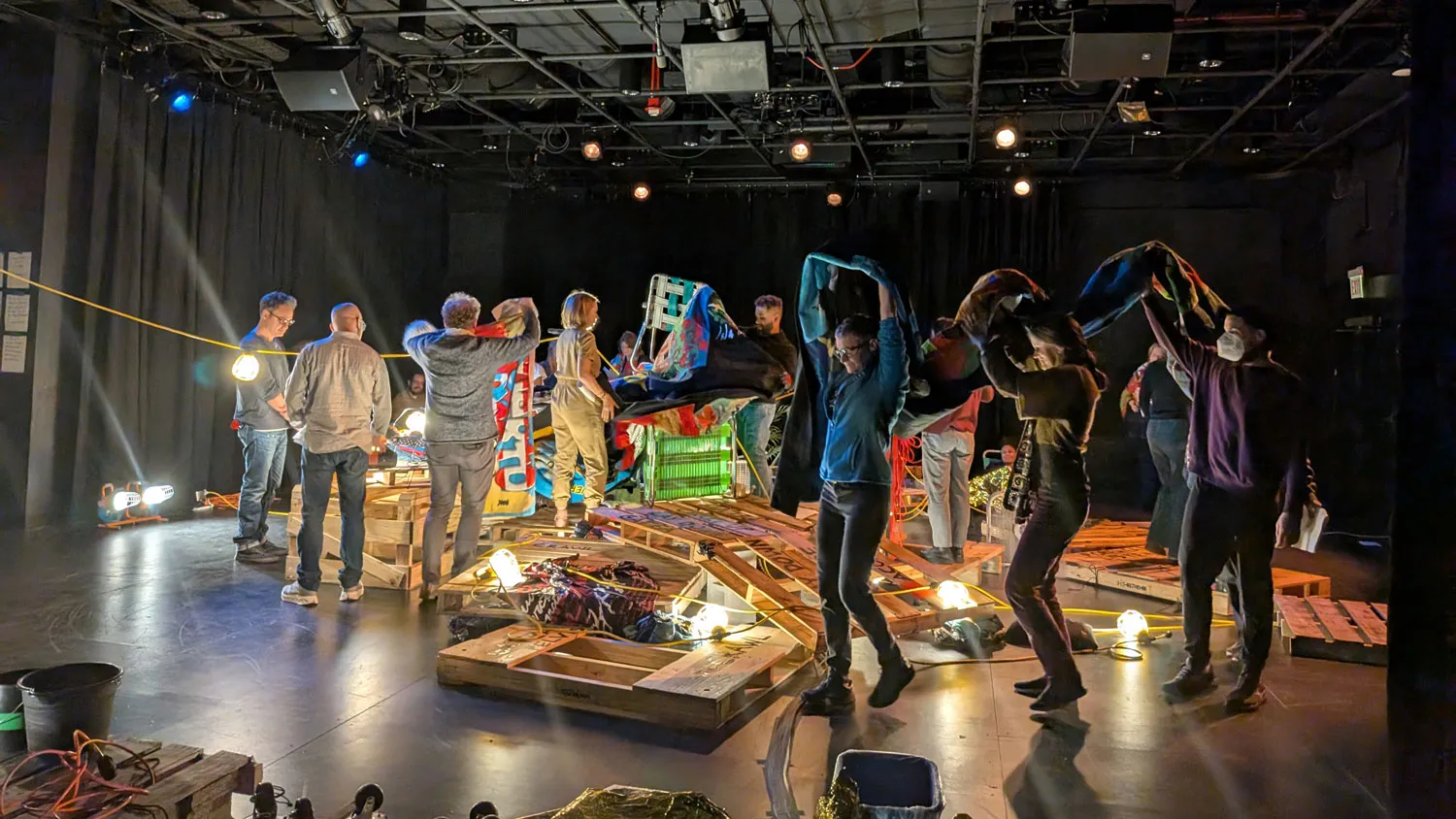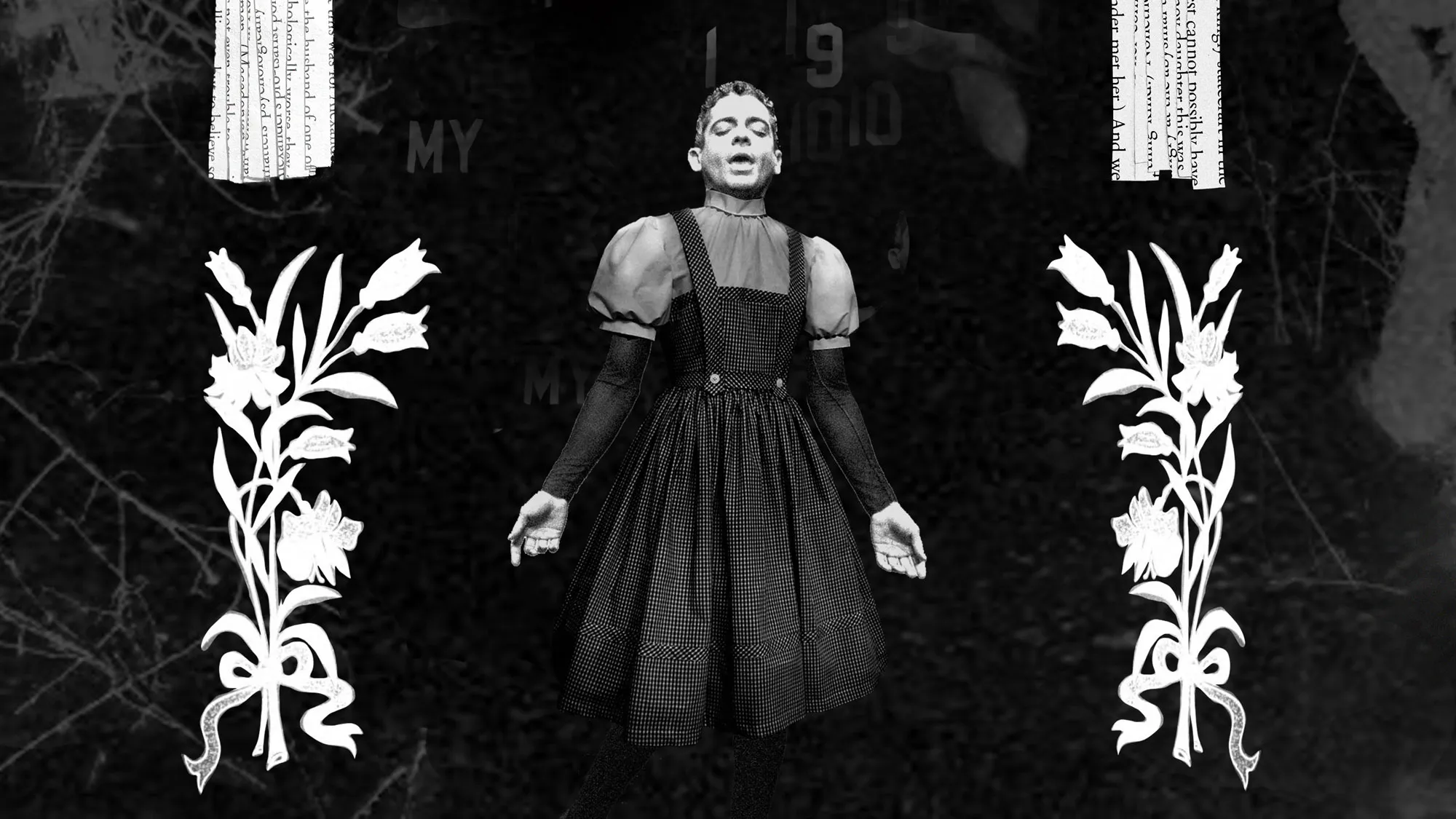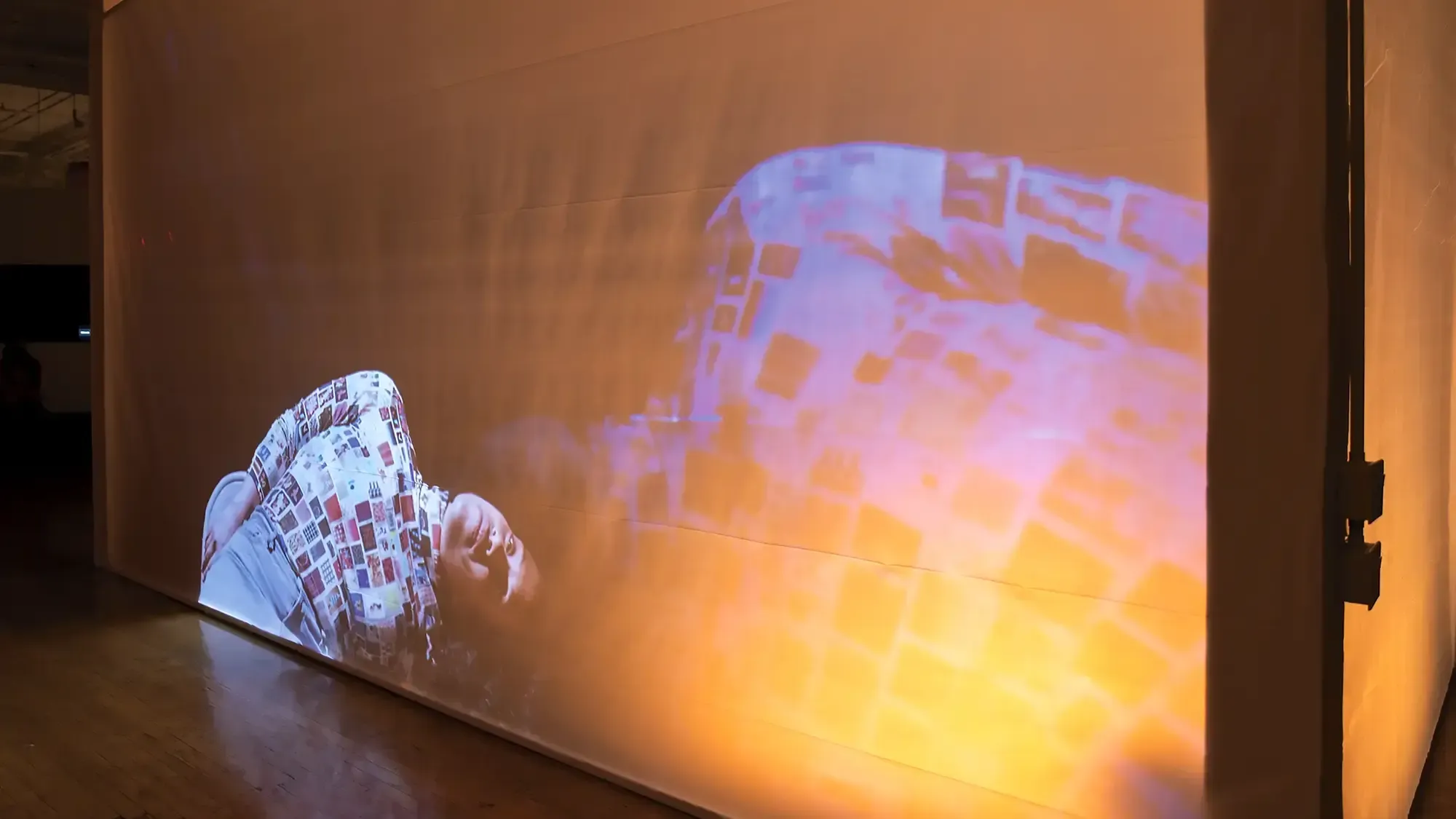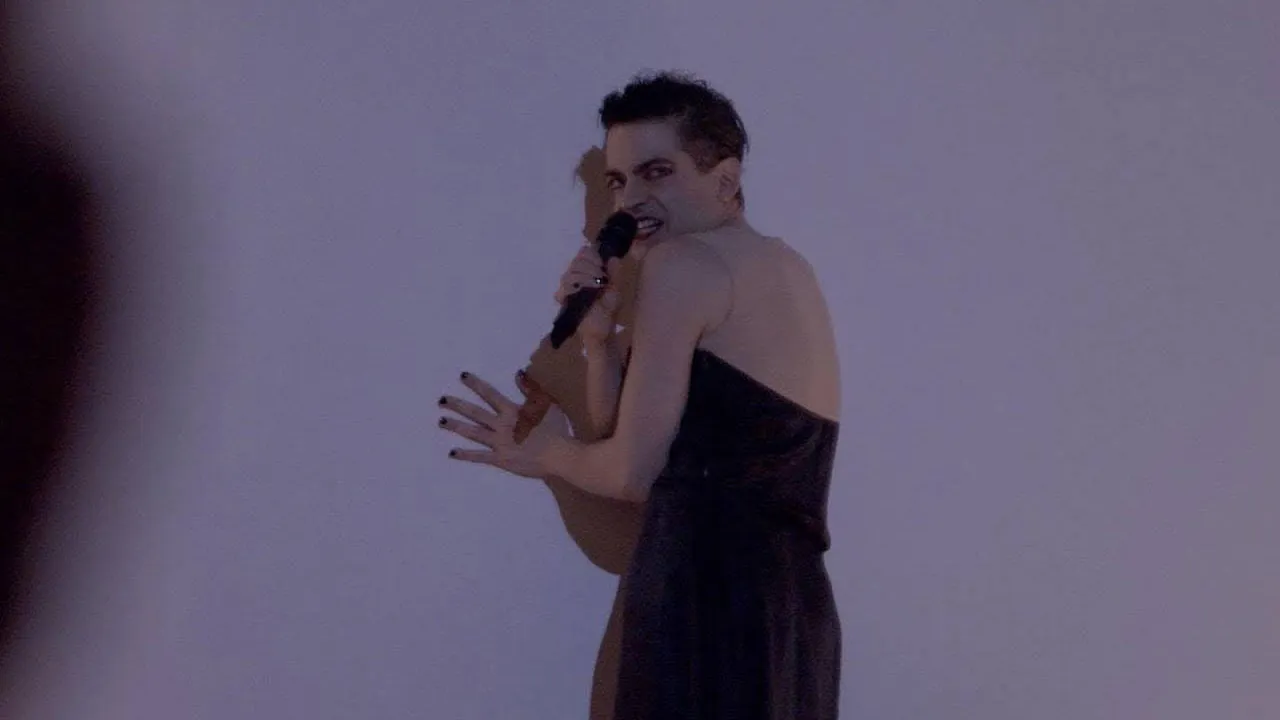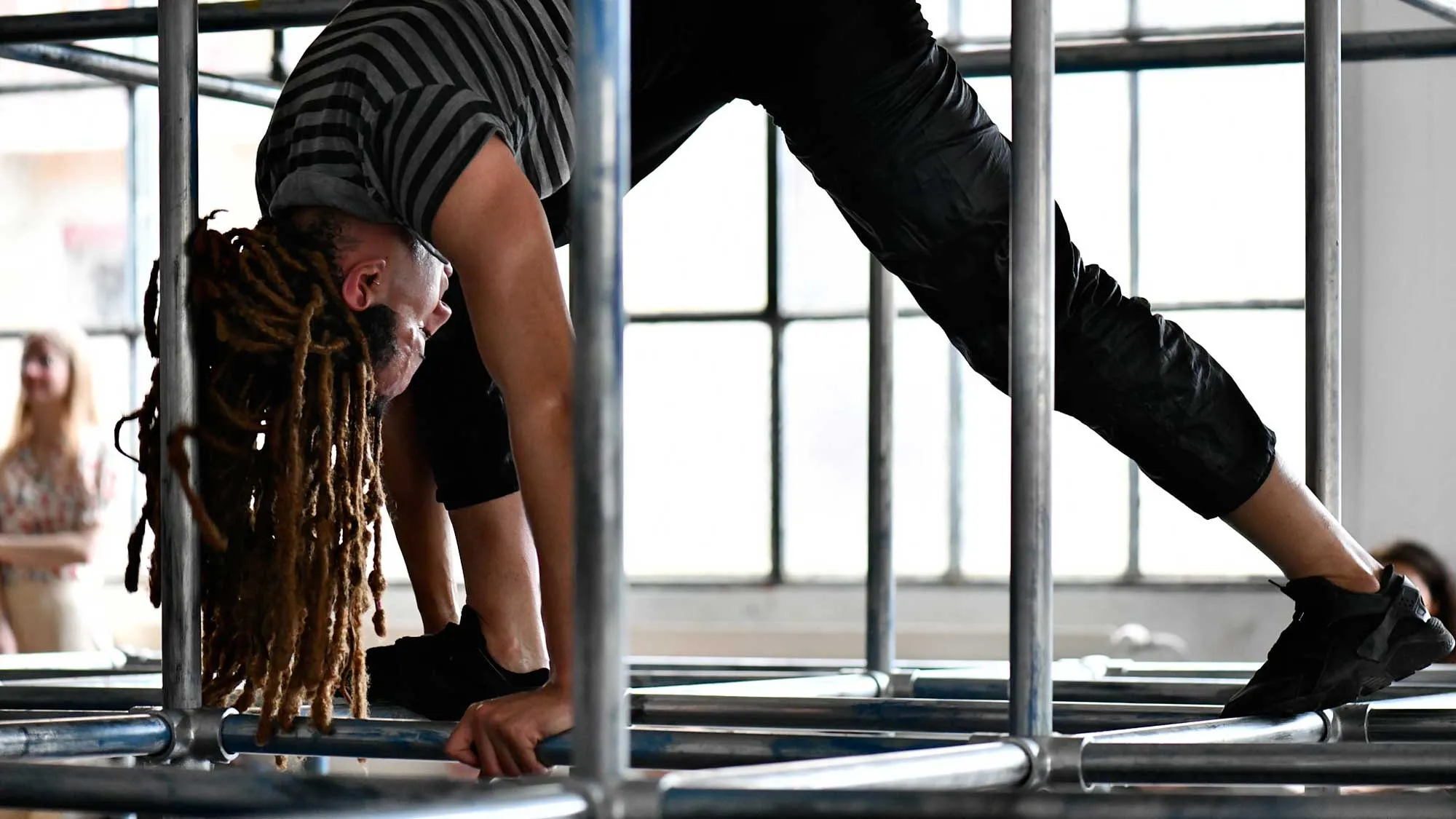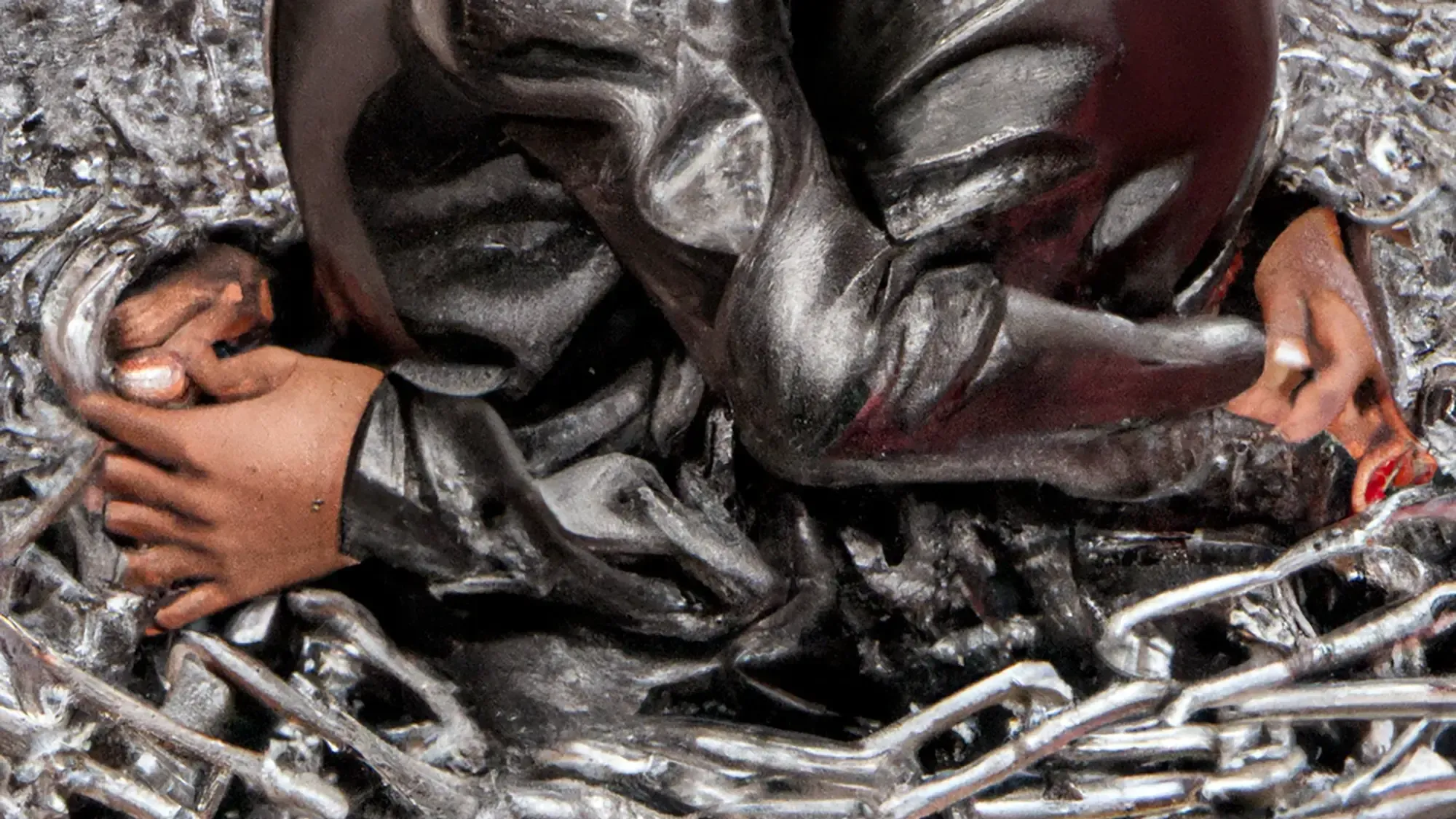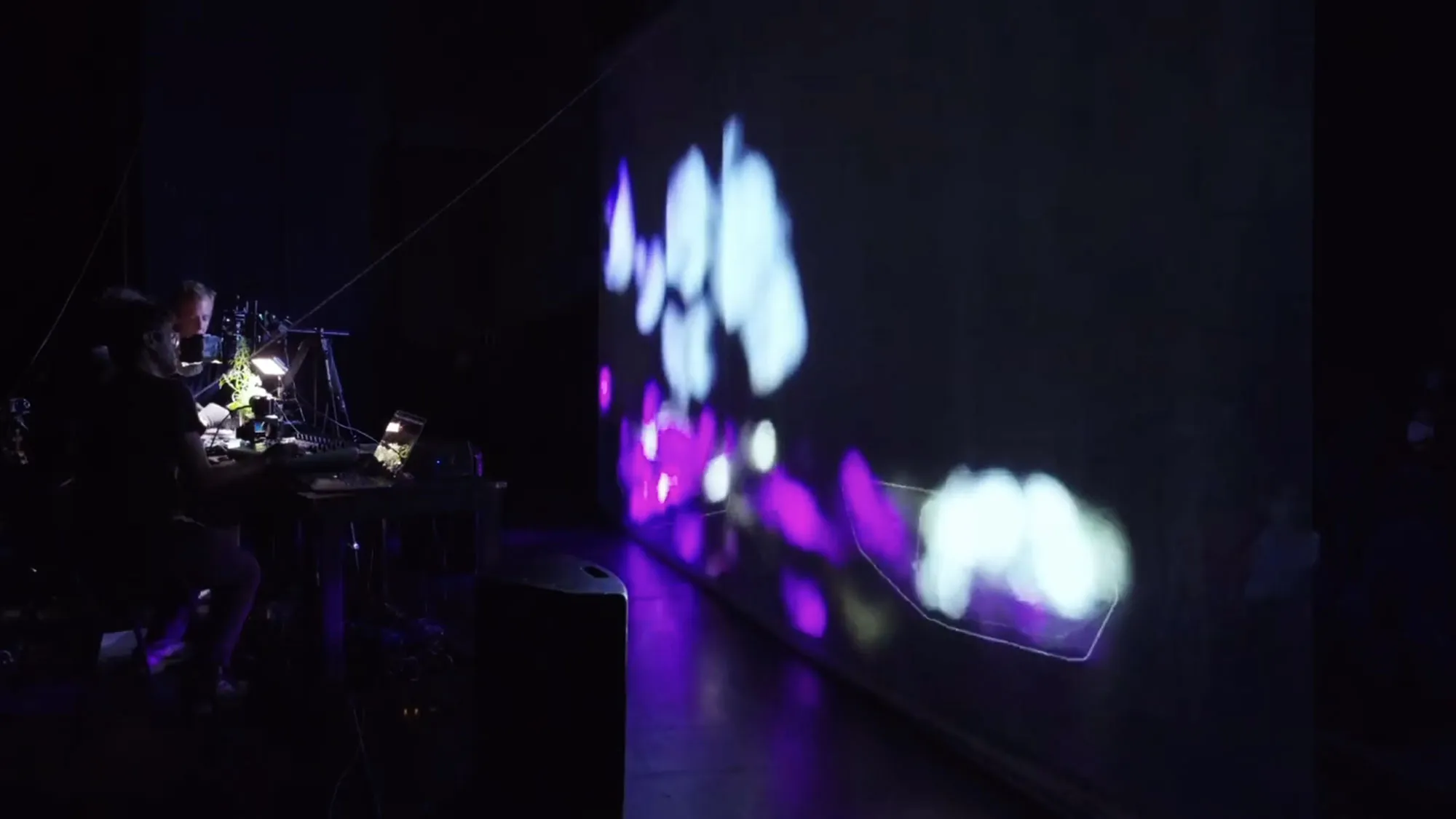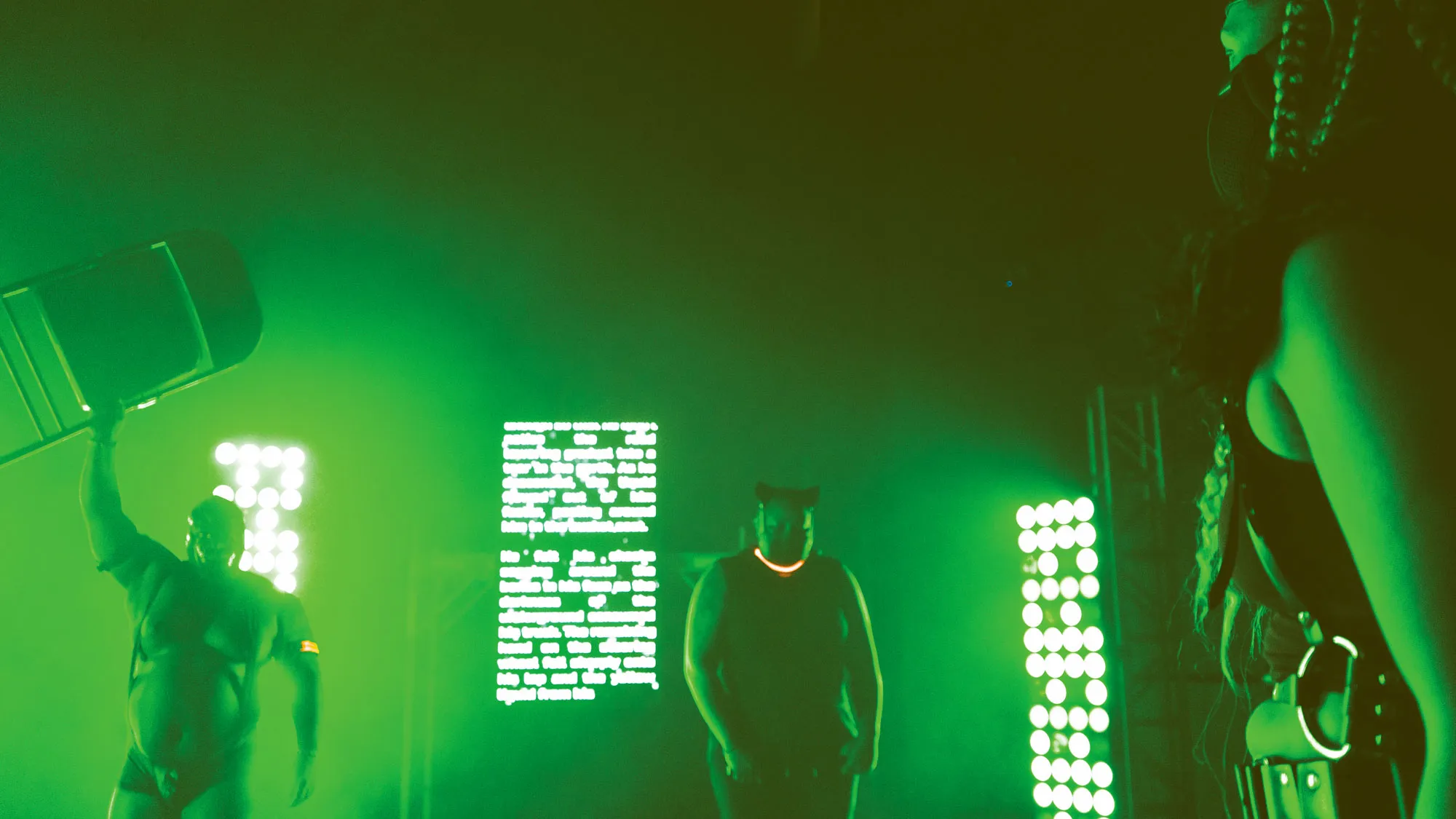Choreographer Leslie Cuyjet performs inside a cocoon of mediated memory, text, and gesture in her solo performance, With Marion. Cuyjet combines her own embodied archive of movement with looping archival, pre-recorded, and live-captured video in a multi-sided enclosure that serves as both projection screen and stage, dynamically shifting the viewer’s perspective on her bodily form over time.
Originally commissioned by The Kitchen (NYC) for an open-plan loft space, this evening-length performance now floats in the dark void of the EMPAC Theater, further emphasizing how Cuyjet displays and obscures herself—and her internal thoughts—amidst objects, images, and the camera’s lens.
Cuyjet grapples with questions of classism, privilege, and race that arise in her family’s archives and the legacy of her great aunt, Marion Cuyjet (1920–1996), a pioneer of 1950s dance education. As a teen, Marion Cuyjet passed as white to train in Philadelphia ballet schools and later created the Judimar School of Dance where Black dancers studied before they could do so at white studios, including Alvin Ailey American Dance Theater’s Judith Jamison (1943–2024) and Philadanco’s Joan Myers Brown (b. 1931).
Layering her own memories of dance training many decades later alongside this complex family legacy, Leslie Cuyjet crafts a dense, fragmented, malleable, and intentionally oblique collage of memory within the sculptural structure and across her own body. With Marion at once fills in historical gaps and highlights where new fissures appear in the unstable relationship between self and the traces of the past that surround it.
Main Image: Leslie Cuyjet, With Marion, The Kitchen, 2023. Courtesy of artist. Photo: Walter Wlodarczyk.
